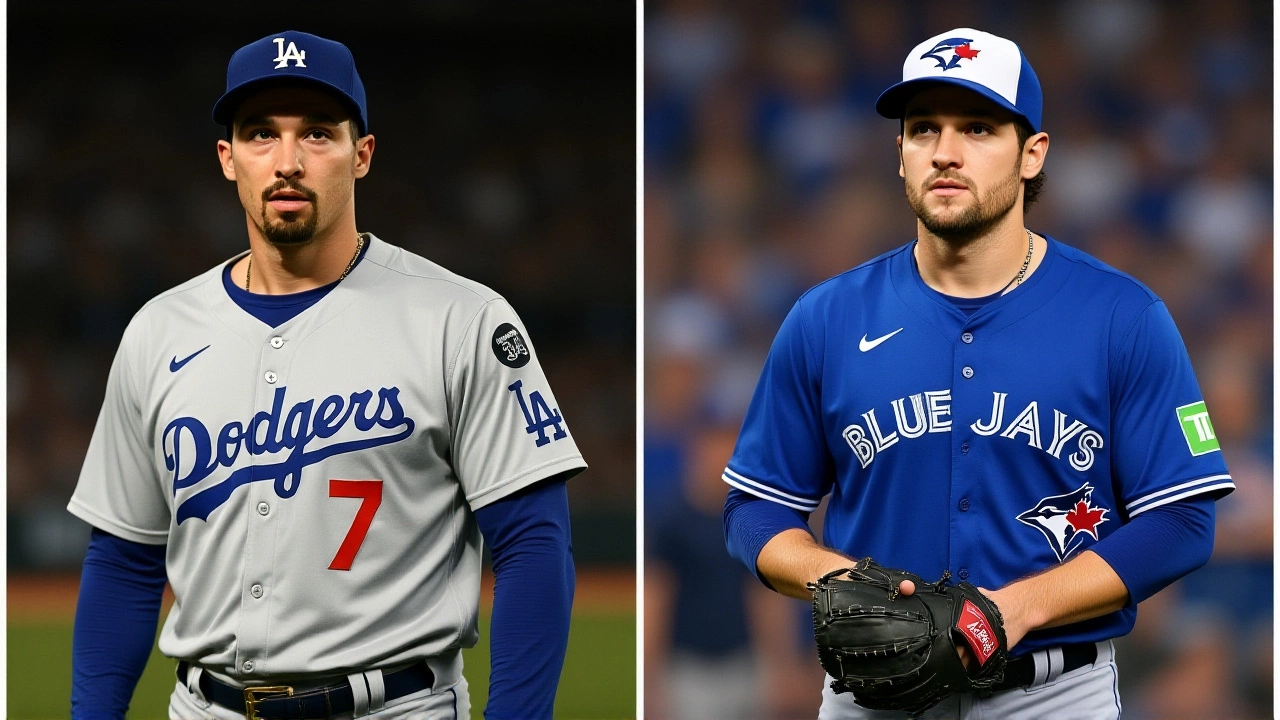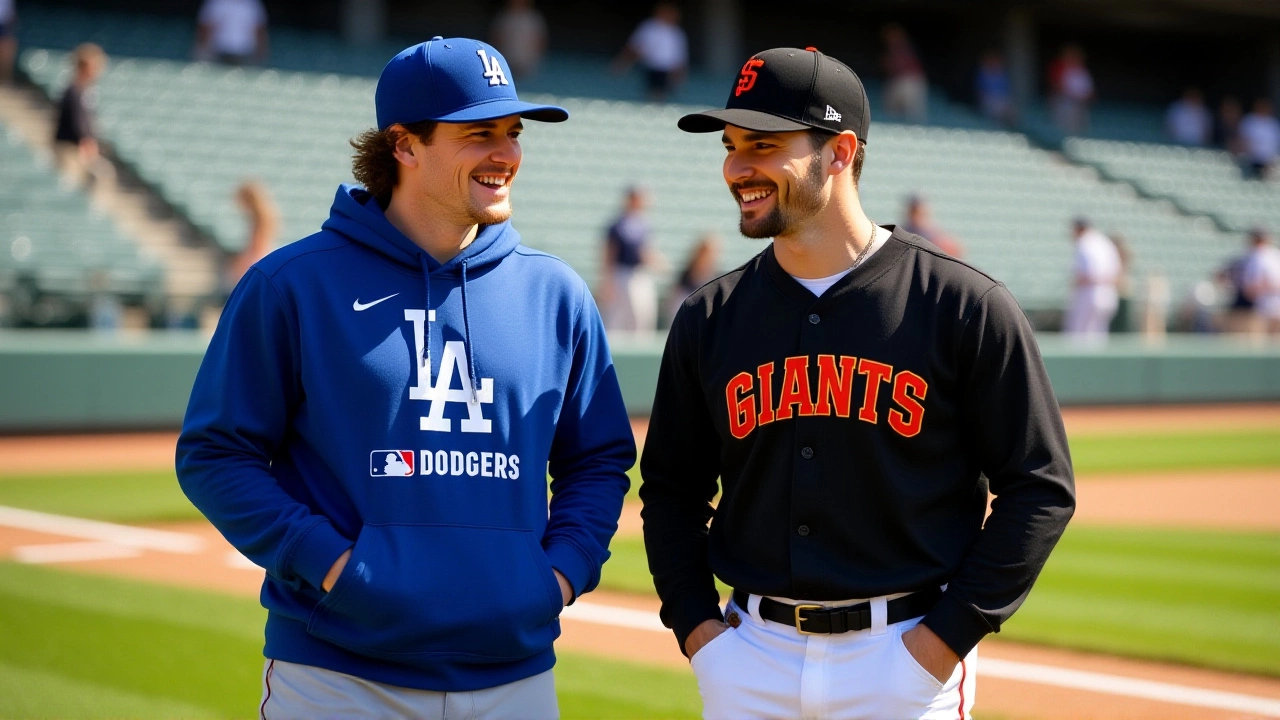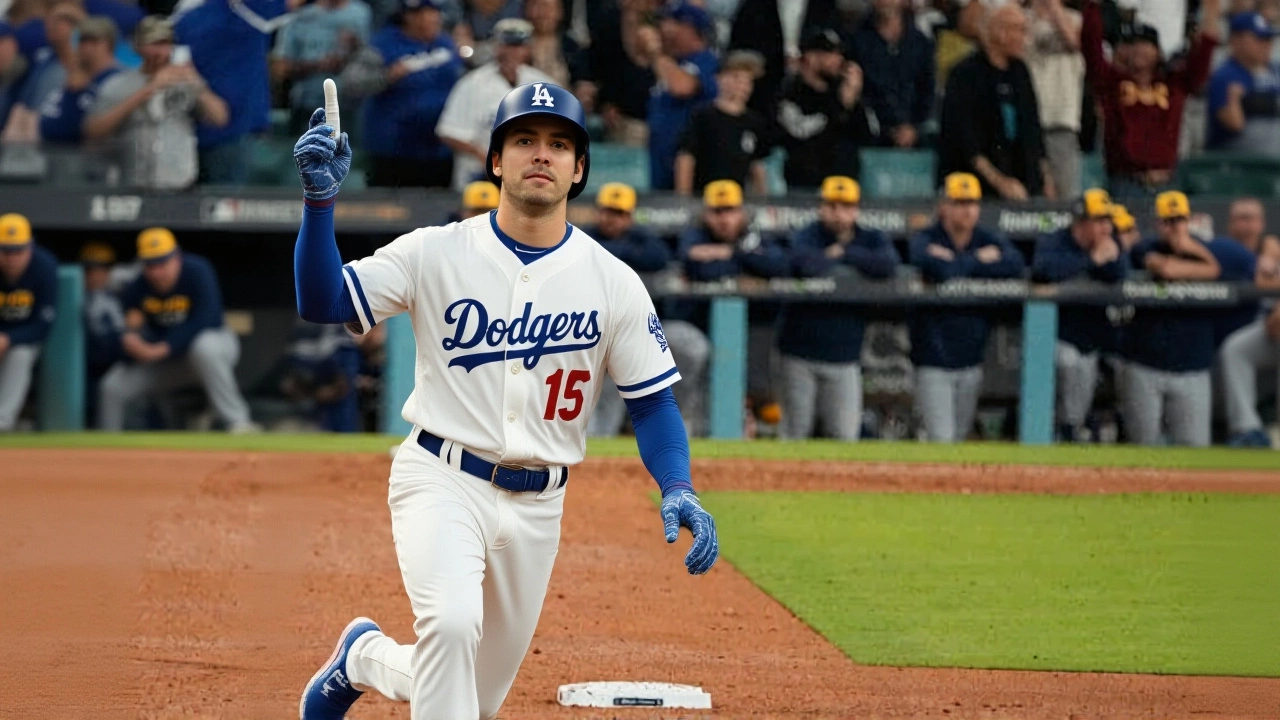When Trey Yesavage, a 22‑year‑old right‑hander, took the ball for the Toronto Blue Jays on , the baseball world held its breath. The rookie, who’d logged just six major‑league starts, became the second‑youngest pitcher ever to open a World Series game. Across town, the Los Angeles Dodgers were counting on a dominant rotation, but an early exit by ace Blake Snell sent the game spiraling into a bullpen nightmare. The clash at Dodger Stadium not only rewrote the script for the opening night but also set the tone for a series that could swing on a single pitch.
Game 1: A Rookie Takes the Mound
Yesavage’s pre‑game comments, captured by the Los Angeles Times, were crystal clear: “I don’t want to be out there thinking too much. I’m at my best when I’m just black‑dead out there and not thinking at all.” That mindset translated into a gritty four‑inning effort. He walked three, surrendered four hits, and kept the damage to two runs. While the Blue Jays scratched a 2‑1 lead, the Dodgers’ early inning surge fizzled, and the game slipped away after a ninth‑inning rally by Toronto.
What made the night odd was the defensive chess move by manager Dave Roberts. He slid Bo Bichette, traditionally a shortstop, into second base – a spot he hadn’t manned in six years and after a 47‑day knee layoff. The gamble paid off; Bichette turned a sharp grounder into a double play that briefly stemmed the Dodgers’ momentum.
Dodgers’ Pitching Woes and Bullpen Collapse
Snell, who logged 61 1/3 innings during the regular season, left after just two innings, allowing one run on two hits. The relievers that followed—most notably Edgardo Henriquez and Will Klein—were thrust into a high‑pressure situation they hadn’t prepared for. In the sixth inning, a string of mis‑located fastballs and hanging sliders opened the floodgates for nine runs, turning a manageable 2‑1 deficit into a 11‑2 hole.
The Dodgers’ roster, announced on Oct. 23, boasted a 12‑pitcher corps, yet two left‑handed arms—Alex Vesia and Tanner Scott—were absent. Vesia was away dealing with a “deeply personal family matter,” while Scott remained sidelined after an injury that kept him out of the NLCS. The missing lefties left a noticeable gap, especially against a lineup that hadn’t faced a dominant left‑handed threat all postseason.

Key Players and Strategic Moves for Game 2
Looking ahead, the Dodgers intend to start Yoshinobu Yamamoto in Game 2. The 26‑year‑old Japanese right‑hander posted a 2.49 ERA over 173 2/3 regular‑season innings and proved his durability with a 1.83 ERA in the playoffs. His complete‑game effort last week signals that the Dodgers are banking on his consistency to neutralize Toronto’s power hitters.
Toronto, meanwhile, will lean on Vladimir Guerrero Jr., the ALCS MVP, and veteran slugger George Springer. Springer’s three‑run blast in Game 7 of the ALCS remains fresh in fans’ minds, and his presence in the lineup adds a left‑handed pop that could exploit the Dodgers’ left‑handed bullpen dip.
Another storyline worth watching is the potential appearance of two‑way phenom Shohei Ohtani. Listed on the Dodgers’ roster as both a designated hitter and occasional starter, Ohtani could swing the series with a clutch home run or, if circumstances demand, take the mound himself.
Historical Context: Blue Jays’ Return to the Fall Classic
The last time Toronto stood on a World Series mound was in 1993, when the club clinched back‑to‑back championships. This 2025 appearance ends a 32‑year drought, a gap that has seen the franchise rebuild from the ground up under the stewardship of the Toronto Blue Jays Baseball Club and its ownership group.
Analysts draw parallels with the 2005‑06 White Sox comeback, noting how a youthful arm can inject a surge of energy—think of 1998’s Kerry Wood. Yesavage’s start echoes that narrative, reminding fans that postseason baseball often rewards the bold.

What’s Next: Implications for the Series
If the Dodgers can tighten their bullpen and let Yamamoto dictate the tempo, they still have a path to a back‑to‑back title. However, the early exposure of a fragile relief corps could force manager Dave Roberts to reconsider his late‑inning matchups, perhaps leaning on veteran left‑hander Clayton Kershaw in high‑leverage spots despite his age‑related uncertainties.
For Toronto, the message is clear: keep the pressure on and trust the inexperienced mound work. If Yesavage can stick around the park and limit damage, the Blue Jays’ offense will have a chance to claw back the series. The balance of power now hinges on how quickly both clubs can adapt to each other’s adjustments.
- Key Fact 1: Trey Yesavage is the second‑youngest pitcher ever to start a World Series opener.
- Key Fact 2: The Dodgers’ bullpen gave up nine runs in the sixth inning of Game 1.
- Key Fact 3: Bo Bichette played second base for the first time since 2019.
- Key Fact 4: Yoshinobu Yamamoto posted a 1.83 ERA in the postseason before Game 2.
- Key Fact 5: Toronto’s first World Series appearance since 1993.
Frequently Asked Questions
How does Trey Yesavage’s start affect the Blue Jays’ chances?
Yesavage’s composure kept Toronto in the game despite limited experience. By limiting the Dodgers to two runs over four innings, he gave the Blue Jays a chance to lean on their offense, which is crucial in a series where every run matters.
What caused the Dodgers’ bullpen to collapse?
The early exit of Blake Snell forced relievers into high‑leverage situations they weren’t prepared for. Missing left‑handed arms Alex Vesia and Tanner Scott left a void, and the replacement pitchers, Henriquez and Klein, struggled with command, leading to the nine‑run sixth inning.
Why was Bo Bichette placed at second base?
Roberts wanted a defensive spark and couldn’t risk a bench player. Bichette’s athleticism allowed him to handle second base for the first time since 2019, and his familiarity with the Dodgers’ hitting tendencies helped mitigate extra baserunners.
What are the Dodgers’ options for Game 2?
Yoshinobu Yamamoto is slated to start, offering durability and a low‑ERA track record. If the bullpen remains shaky, Roberts may deploy Clayton Kershaw in a high‑leverage eighth‑inning slot, despite his age, to close out tight games.
How significant is Toronto’s World Series return?
It ends a 32‑year drought, the longest in franchise history. The appearance revives memories of the early ’90s dynasties and energizes a fan base that has waited a generation for another championship shot.
